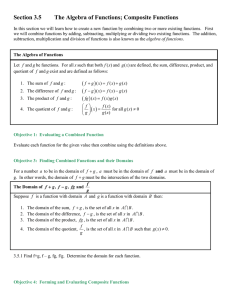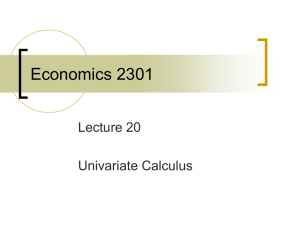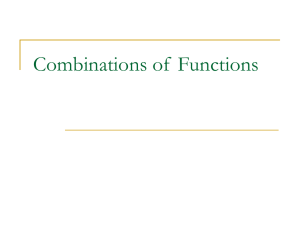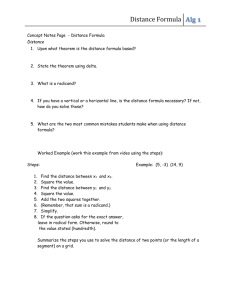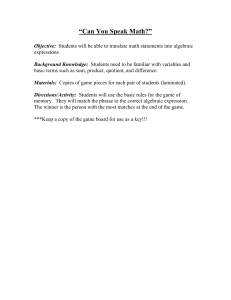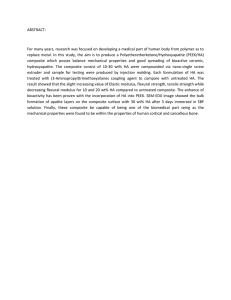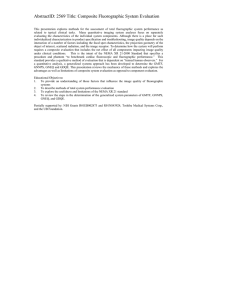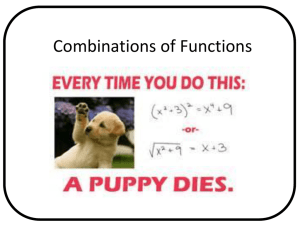Function Operations Acc Math 2 Notes Jan 29
advertisement
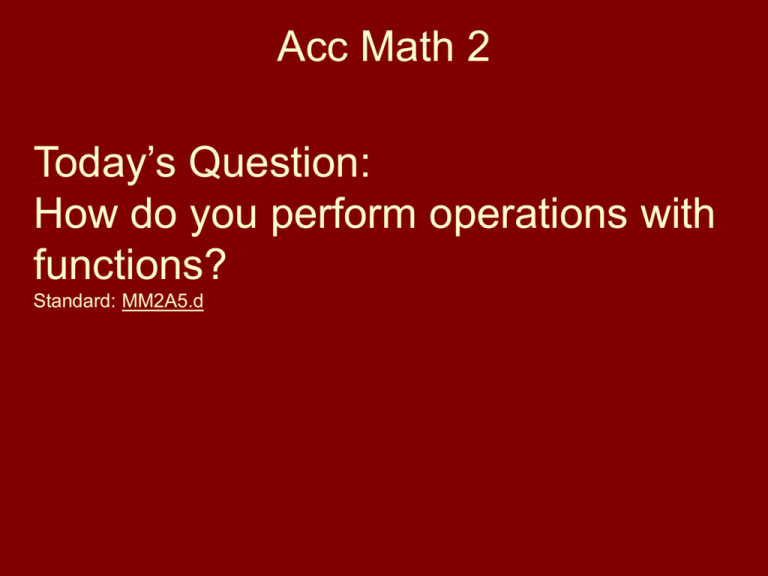
Acc Math 2 Today’s Question: How do you perform operations with functions? Standard: MM2A5.d Lesson 4.2 Operations with Functions Objective To define the sum, difference, product, and quotient of functions. To form and evaluate composite functions. To determine the domain for composite functions. Basic function operations Sum f + g x f x + g x Difference f – g x f x – g x Product f Quotient f x f , g x 0 f g x x g x g g x f x g x Function, domain, & range The domain of a function is the set of all input values (x-values) The range of a function is the set of all output values (y values) A relation is a function if all values of the domain are unique (they do not repeat). A test to see if a relation is a function is the vertical line test. If it is possible to draw a vertical line and cross the graph of a relation in more than one point, the relation is not a function. Example 1 Find each function and state its domain: f x 4 x 5 ; g x 2x 5 f+g f g x 4 x 5 2 x 5 6 x 5 ; Df g x : All Re al f–g f g x 4 x 5 2 x 5 2 x 5 ; Df g x : All Re al f ·g f g x 4 x 5 2 x 5 8 x 10 ; Df g x : All Re al f /g f / g x 4 x 5 / 2x 5 2; Df g x : x 0 Example 2 Find each function and state its domain: f x 2x 2 ; g x x 4 f ·g f g x 2 x 2 x 4 2 x 6 ; Df g x : All Re al f /g 2x 2 2 f g x 4 2 ; Df x x g x : x 0 Your Turn Find each function and state its domain: f x 6 x 2 ; g x 3 x 2 f+g f–g f ·g f /g Composition of functions Composition of functions is the successive application of the functions in a specific order. Given two functions f and g, the composite function f g is defined by f g x f g x and is read “f of g of x.” The domain of f g is the set of elements x in the domain of g such that g(x) is in the domain of f. Another way to say that is to say that “the range of function g must be in the domain of function f.” Example 1 Evaluate f g x and g f x : f x x 3 g x 2x 2 gf fgxx 2 2 xx 2 31 31 1 2 22 xx2246 x 9 1 2 x 2 12 x 18 1 f g x 2 x 2 4 g f x 2x 2 12x 17 You can see that function composition is not commutative! Example 2 Evaluate f g x and g f x : f x 2x g x x 3 1 2x fg gf x x 2x 1 3 2 x 3 2 3 x 2 f g x 3 x 1 g f x 3 2x 3 1 1 3 2x Again, not the same function. What is the domain??? Example 3 Find the domain of f g x and g f x : f x x 1 g x f x g x x 1 Df g x : x 0 (Since a radicand can’t be negative in the set of real numbers, f be x greater x than 1 or Dgequal x 1 xgmust f xto: zero.) (Since a radicand can’t be negative in the set of real numbers, x – 1 must be greater than or equal to zero.) Your turn Evaluate f g x and g f x : f x 3x 2 g x x 5 Example 4 Find the indicated values for the following functions if: f x 2x 3 2 g x x 1 f (g (1)) f (g (4)) g (f (2)) g (g (2)) Summary… Function arithmetic – add the functions (subtract, etc) Addition Subtraction Multiplication Division Function composition Perform function in innermost parentheses first Domain of “main” function must include range of “inner” function

